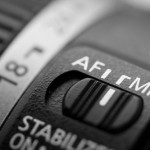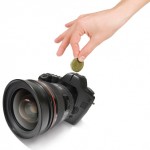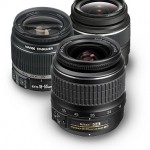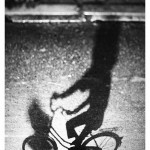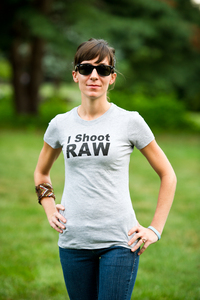
RAW – A RAW file is the unedited (unprocessed) image data that you digital SLR camera captures every time you take a photo. Because RAW files are unprocessed, they come out looking flat and dark. RAW images need to be viewed and processed using your camera’s software or in more robust commonly used software like Photoshop, Lightroom, Aperture, etc prior to being ready for display or print.
JPEG – JPEG files are processed right within the camera. How exactly they are processed varies from model to model. While color temperature and exposure are set based on your camera settings when the image is shot, the camera will also process the image to add blacks, contrast, brightness, noise reduction, sharpening (which you can see in the example above) and then render the file to a compressed JPEG. These files are finished and can be viewed and printed immediately after shot.
It seems to be one of the biggest debates in digital photography–what’s better: RAW or JPEG? Who wins?
Some pro photographers say JPEG: you should always know the perfect settings for a photo. And others say always shoot in RAW: it’s better quality and you have more power to change things later on.Well, I think both formats have advantages and disadvantages, so rather than take one side for everything, I’ll run through some of the key differences between them, and then suggest when each format makes sense.
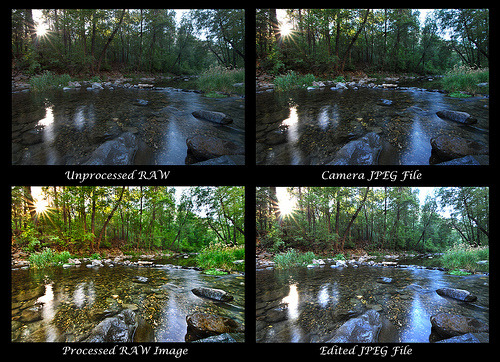
RAW
– Allows maximum control in post-processing
– Allows you to change white balance later without any loss of quality
– Allows you to change exposure, saturation, sharpness, curves, etc with less quality loss than you’d experience with JPEG
– larger filesize means you’ll fill up your memory card faster, and it’ll take longer to download images to your computer
– can only take a few shots in a burst before filling up your camera’s buffer
– Require special programs to convert into the JPG format
– Require powerful computers to view and edit
– Can’t be instantly e-mailed or uploaded to online galleries
– Require time and effort to “develop”
JPEG
– Any post-processing will result in quality loss (especially exposure adjustments).Less control over the way the final image appears
– Harder to correct mistakes of color and exposure
– Smaller filesize means you can fit more on a memory card (usually twice as many), and you’ll download images faster to your computer
– Allows you to shoot significantly more shots in a burst
– Easy to view and edit with any image editing program
– Easy to modify to e-mail to friends
– Easy to upload to online galleries
When Do I Use RAW?
Shooting in RAW usually makes the most sense, if your goal is to get the highest quality image possible. It’s especially important for landscape shots, where white balance is often a problem.
– Journalistic shooting.
If you are shooting journalistically, meaning you are shooting in fast moving situations that are constantly changing in terms of lighting, scenes, backgrounds, subjects, etc then you need to be shooting RAW because nobody has the ability to shoot the “perfect exposure” every time
– Need additional range and tonal detail.
If you are shooting landscapes, nature, or virtually any scene that has a high Dynamic Range, then you want to be shooting in RAW to allow you to have additional post production flexibility to darken (burn) the highlights, while raising (dodging) the shadows, and properly tone-map an image.
When Do I Use JPEG?
With all the benefits of RAW, it may seem like the clear winner for everything. However, there’s one property of JPEGs that may make them the winner in some situations. With JPEG you can shoot a lot more photos in a burst, than you can with RAW. When is this useful? Wildlife. Any time you’re photographing a quick moving subject, you can significantly increase your chances of getting a sharp photo by simply taking more shots.
-Personal use
The rule here is that you don’t want to be spending crazy amounts of time processing images when the differences are going to be negligible and go unnoticed. Know your audience, know your situation, know your use for the images, and select appropriately.
-Rapid succession burst shooting
Shooting JPEG will allow you to shoot a lot more shots prior to filling the buffer. So, in this situation it is best to switch to JPEG, dial in all of your exposure and temperature settings in camera and fire away.
Conclusion
By now, you should have a strong understanding of the in practice differences between RAW and JPEG file formats. Use this understanding, along with our situational advice to decide which file format best fits your needs for any particular situation. While the RAW format is a super format, that doesn’t mean it is the best format for all situations.

